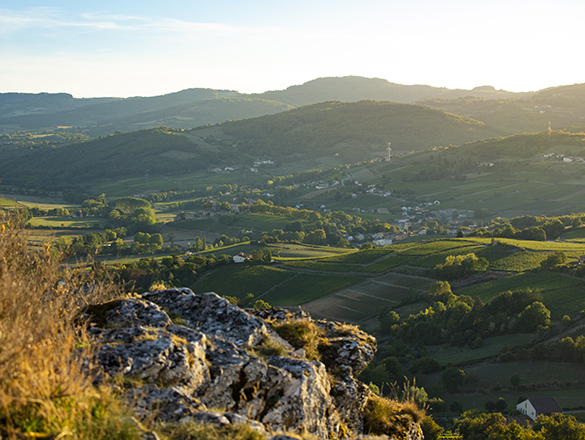

The vineyards of Bourgogne produce some great wines with a historical and international reputation. However, the region is not simply limited to its iconic appellations. In addition to its Village Premier Cru and Grand Cru AOCs, it also produces a range of wonderful Régionale and Village appellations to explore.
You will also find a full list of the Bourgogne’s Climats and lieux-dits on this page.
Check out the complete list of the 84 Bourgogne appellations.
However, your exploration has only just begun. Bourgogne wines have never before offered such high quality. Besides our range of internationally celebrated wines, try some of our lesser-known appellations where there are lots of surprises in store.
And for a fun way to find out more about the wines on offer, try out our “Which Bourgogne wine is right for me?” quiz, or check out Bourgogne Maps to take an interactive tour of the region.
Regional appellation
VIGNOBLE DU MÂCONNAIS
31 juillet 1937
Whites - Chardonnay.
Area under production*:
1 hectare (ha) = 10,000 m2 = 24 ouvrées.
2,196.99 ha including
Mâcon: 148.16 ha
Mâcon-Villages: 2,048.83 ha
Average annual yield**:
1 hectolitre (hl) = 100 litres = 133 bottles.
113,893 hl including
Mâcon: 4,601 hl
Mâcon-Villages: 109,292 hl
*In 2022 **5-year average, 2017-2021
Régionale Appellations of the Mâconnais (Saône-et-Loire).
The word VILLAGES may only be added to the word MÂCON for white wines harvested within the defined area of the appellation MÂCON-VILLAGES.
Producing communes:
Mâcon: 90 communes of the Mâconnais.
Mâcon-Villages: 83 communes of the Mâconnais.

The Mâconnais white wines are the colour of white or yellow gold or straw-coloured with gently glowing silvery or greenish highlights. To the nose, their aromas suggest broom, white roses, acacia, honeysuckle, fern, verbena, lemon-grass, and citrus fruits (grapefruit, mandarin oranges).
In the mouth, the finish adds nuances of pine, quince and fennel. The impression on the palate varies according to each village and each terroir of origin. These wines are fresh and luscious as well as dry and well-fruited. They have good concentration backed by sufficient acidity to ensure their keeping qualities. They are full and smooth in character.

White: their cheeky charm and lively approach make them perfect as a pre-dinner drink served with salty finger foods such as chips, crackers, peanuts and olives. Their perfect all-round balance of vivacity, fullness, and smoothness plus aromatic complexity makes them easy to match with food. Poultry or veal in cream sauce does them justice in the winter, as does creamy risotto with meat, poultry, or fish. In the summer, they do justice to grilled fish, cold antipasto, ratatouille, or mixed salads with onions. They are even capable of taking sushi and goat’s cheese under their wing.
Serving temperatures: 10 to 11°C as a pre-dinner drink, 11 to 12°C with food.

In this part of southern Bourgogne, the vines occupy a landscape of little hills and valleys that look as though they have been painted with a water-colorist’s brush. The hills of the Mâconnais extend over some 40 km from the Côte Chalonnaise to the Rock of Solutré and are bordered on one side by the river Saône and the Grosne on the other. Vines were first planted here in Gallo-Roman times and were fostered in the Middle Ages by the powerful abbeys of Tournus and Cluny. This charming landscape was celebrated by the poet Lamartine, one of its native sons. The town of Mâcon strongly upholds the traditions of this vineyard with its friendly personality. This is particularly true of the festive event Les Mâcon wine note? which takes place every May on the Saône’s quays.

Separated by a series of parallel faults, the hills of the Mâconnais are linked along axes which give them either a north/north-westerly or a south/south-easterly exposure. The vines take readily to these hillsides. Limey or calcic brown rendzinas suit the long-keeping Chardonnay. Elsewhere, flinty sands and clays often mixed with calcium rich rocks or sandstone pebbles favor the ready to drink Chardonnay.
